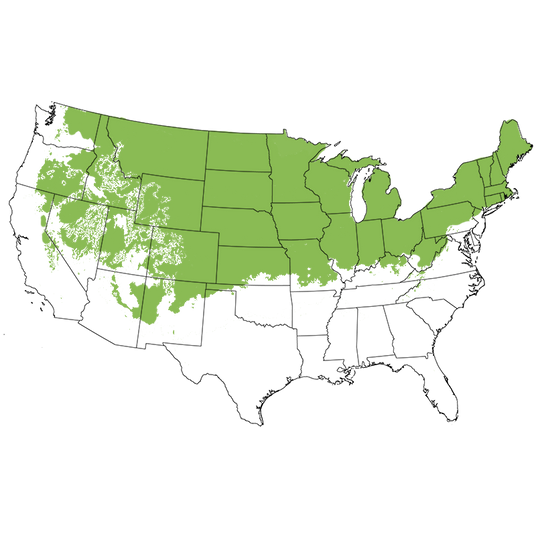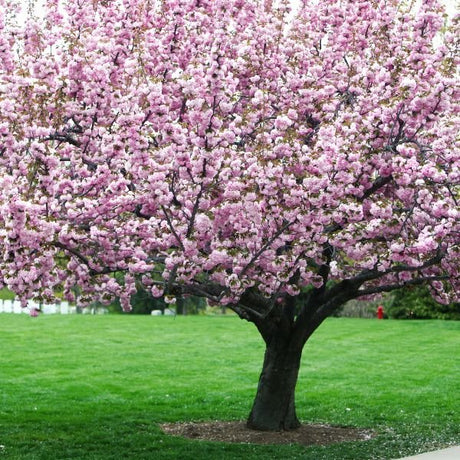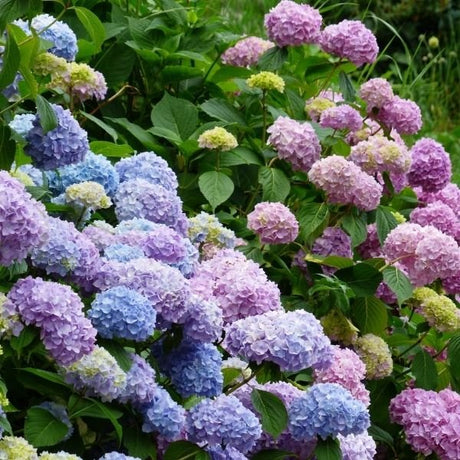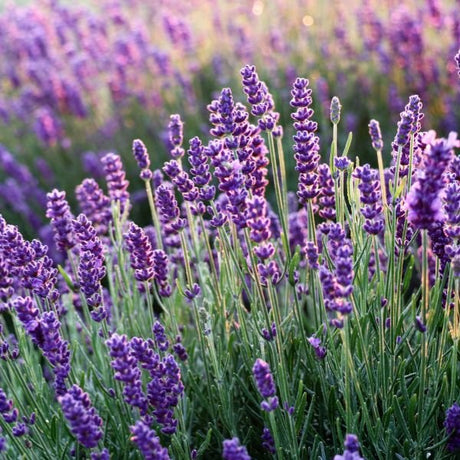Sweet Fern
- Stay Protected with Plant Sentry ™
Sweet Fern - #1 Container is backordered and will ship as soon as it is back in stock.
To receive an email notification when our next crop is ready, please enter your email below..*
Plant Sentry™
Plant Sentry™
Plant Sentry is designed to protect both consumers and the nursery trade from invasive plant pests and diseases. Sites that display the Plant Sentry protection badge are protected from consumers buying and nurseries shipping material carrying invasive pests and diseases.
This proprietary eCommerce software prevents the shipment of a restricted plant to each state. The Plant Sentry system includes a shipment certification program. The Plant Sentry Compliance Officer works closely with NatureHills.com and each nursery or fulfillment center to ensure only compliant plants are sold to customers.
Click Here to learn more

Delivery and Shipping
Delivery and Shipping
Shipping
To obtain a more accurate shipment time-frame, simply enter your zip code in the “Find Your Growing Zone” box to the right. Our plants are grown all over the country and lead time on items may be different because of this. Once your order is placed, you will also receive the specific shipment time-frame information as part of your order confirmation. Once an item ships, you will receive shipment notification and tracking numbers, so you can follow along while your plant travels to your doorstep. We use FedEx, UPS, or USPS at our discretion.
Due to winter weather we have put a hold on shipping to the areas shown below in grey. You can still order now and we will ship the plant to you during an appropriate time for your zone.
Standard Shipping Rates
At Nature Hills we handle, package and ship the products you order with the utmost care to ensure healthy delivery. Shipping and handling charges are calculated based on the tables below. Please note that some items include an additional handling surcharge, these will be noted on the item's product page.
| From | To | S&H |
|---|---|---|
| $0 | $19.99 | $24.99 |
| $20 | $49.99 | $29.99 |
| $50 | $69.99 | $34.99 |
| $70 | $99.99 | $39.99 |
| $100 | $129.99 | $44.99 |
| $130 | $149.99 | $48.99 |
| $150 | $150+ | Approx 28% |
Click here to see our full rates
Buying Options for Plants
Nature Hills sells a large variety of plants with several options available. Plants are offered in both potted containers and as dormant bare root without soil. Here is a helpful resource to understand your options as you create a beautiful landscape with help from Nature Hills.
Ever wonder what a larger plant will mean for your landscape? Container Sizes are really all about the age of the plant!
Seasonally, Nature Hills offers hand selected, high quality bare root trees, shrubs and perennials. Bare root plants are sold by height from the top of the root system to the top of the plant. Plants may be taller than the height minimums.
- Popular sizes of select trees are 1 foot, 2 feet, 3 feet, etc.
- Popular sizes of select bare root plants is 1 foot, 18 inches, etc.
Nature Hills Container Size by Volume
Keep in mind, specific varieties and different growing conditions can affect the rate at which plants grow. Variations in size may occur.
| Young Plants to 18 Months | ||
|---|---|---|
| Size | Volume | |
| 2"x2"x3" | Ranges from | .18 to .21 dry quarts / .198 to .23 dry liters in volume |
| 4.5" Container | Equal to | .65 dry quart / .72 dry liter in volume |
| Sprinter Pot | Equal to | .63 dry quart / .69 dry liter in volume |
| 4" Container | Ranges from | .31 to .87 / .35 to .96 dry liter in volume |
| 6" Container | Equal to | 1.4 dry quarts / 1.59 dry liters in volume |
| 1 Quart | Equal to | 1 dry quart / 1.1 dry liter in volume |
| 5.5" Container | Equal to | 1.89 of a dry quart / 2.08 dry liters in volume |
| 4"x4"x5" | Ranges from | .8 to 1.1 dry quarts / .88 to 1.2 dry liters in volume |
| 4"x4"x6" | Ranges from | 1.0 to 1.3 dry quarts / 1.1 to 1.41 dry liters in volume |
| 4"x4"x9" | Ranges from | 1.1 to 2.1 dry quarts / 1.2 to 2.3 dry liters in volume |
| 4"x4"x10" | Ranges from | 1.7 to 2.3 dry quart / 1.87 to 2.53 dry liters in volume |
| Plants 18 Months - 2.5 Years Old | ||
|---|---|---|
| Size | Volume | |
| 2 Quart | Equal to | 2 dry quarts / 2.2 dry liters in volume |
| #1 Container | Ranges from | 2.26 to 3.73 dry quarts / 2.49 to 4.11 dry liters in volume |
| 5"x5"x12" | Equal to | 3.5 to 4.3 dry quarts / 3.85 to 4.74 dry liters in volume |
| Plants 2 - 4 Years Old | ||
|---|---|---|
| Size | Volume | |
| #2 Container | Ranges from | 1.19 to 1.76 dry gallons / 5.24 to 7.75 dry liters in volume |
| #3 Container | Ranges from | 2.32 to 2.76 dry gallons / 10.22 to 12.16 dry liters in volume |
| Plants 3 - 5 Years Old | ||
|---|---|---|
| Size | Volume | |
| #5 Container | Ranges from | 2.92 to 4.62 dry gallons / 12.86 to 20.35 dry liters in volume |
| #6 Container | Ranges from | 5.25 to 6.01 dry gallons / 23.12 to 26.42 dry liters in volume |
| #7 Container | Ranges from | 5.98 to 6.08 dry gallons / 26.34 to 26.78 dry liters in volume |
Plant Highlights
Sweet Fern highlights at a glance!
Plant Highlights
Plant Highlights
-
Brand
-
Botanical Name
-
Growing Zones
-
Mature Height
-
Mature Spread
-
Sun ExposureFull Sun
-
Moisture
-
Soil
-
Growth RateMedium
-
Flower Color
-
Fall Color
-
Pollinator Friendly
-
Pruning Time
-
Bloom PeriodEarly Spring

Growing Zones 2-6
Butterfly Garden Must-Have Native Sweet Fern
- Important Native Shrub
- Very Low Maintenance Once Established
- Glossy Green Foliage
- Fern-Like Leaves
- Sweet Smell When Leaves Are Crushed
- Butterfly Caterpillar Host Plant
- Wonderful, Shaggy Texture
- Showy Catkins Give Winter Interest
- Great for Naturalizing
- Erosion Control
- Salt Tolerant
- Drought Tolerant
- Deer Tend to Leave Them Alone
One of the hottest native shrubs around is the aromatic Sweet Fern (Comptonia peregrina). People are discovering their useful nature, fun texture and importance as a butterfly host plant.
It's hard to find an easier plant. Give them a little room to fill in and let them do their thing to cover bare ground in a beautiful way. Get ready to see Io and Sphinx moths, and those gorgeous Anise Swallowtail butterflies and caterpillars!
Sweet Fern looks like a Dr. Suess plant, with unique, large leaves that resemble ferns. Crushed, their sweet, resinous fragrance adds a fantastic layer to your landscape.
These plants are not true Ferns. Rather, they are a member of the Bayberry family, which is where their luscious, fragrant foliage comes from.
People are raving about their use as an herb, and the shrubs make a good addition to a Wild Garden or Permaculture. They will fix nitrogen in the soil.
Use them along the edge of a mixed shrub border, and allow them to spill over the edge of the bed. You'll love the scent as you brush past them.
Sweet Fern brings a lot of texture to your yard. From the notched edges of the leaves, to the lenticels on the bark, to the puffy catkins held in bunches during early spring, you'll always have something to look at.
From creative lavish roadside or parking lot plantings in the middle of the city, to flourishing in a sandy spot in full sun, to filling in along the edges of a country Rain Garden; Sweet Fern is tough enough to handle just about anything.
That includes bitter cold. These plants are tough stuff, and can even be grown in frigid Zone 2.
Order this native variety from the expert growers of Nature Hills today. We're proud to offer this superior, top-choice, native shrub.
How to Use Sweet Fern in the Landscape
There is something very modern about the look of Sweet Fern. Move over Monstera or Fiddle-Leaf Fig, Sweet Leaf looks ready to become the next big Instagram plant star. We predict you'll start seeing a lot more of this native plant.
It stays compact in terms of height, but spreads out wide. Use them as a single species planting in a tough site. You'll luxuriate in their lush appeal.
Create a mass planting on a slope or wide, open area. Plant 2 to 3 feet apart on center, measuring from the center of one plant to the center of the next. They'll fill in rapidly to give you a unique, memorable landscape.
On a slope or embankment, pair with other spreading plants, such as Sumacs and Mountain Mint, to boost biodiversity and control erosion. Why mow turf on a steep site, when you can simply enjoy the buzz of a happy ecosystem?
Edge your mixed shrub border with several stands of Sweet Fern. Or, use it as a contrasting backdrop for flowering perennials in a Butterfly Garden.
Use the at the edge of Rain Gardens. Run them along the length of a sidewalk, or create a special, low-maintenance Patio planting. Enjoy these beautiful, easy-care plants!
#ProPlantTips for Care
Sweet Fern is quite adaptable. It can grow well in full sun or part shade. It is drought tolerant, but can handle occasionally wet spots, too.
No need to amend the soil, unless your soil is very alkaline. Ideally, it prefers sandy, acidic loam. It will tolerate neutral pH, but will need acidifying soil treatments if your soil pH is above 7.
Site it carefully to allow room to spread to the full width. These plants create charming colonies, and that requires ample space. They will not appreciate being moved or transplanted.
Sweet Fern is an important larval host plant for both moths and butterflies. It works hard in any landscape. And you can feel great about selecting this lush, native option. Order yours today!







